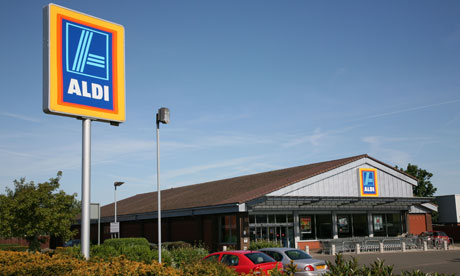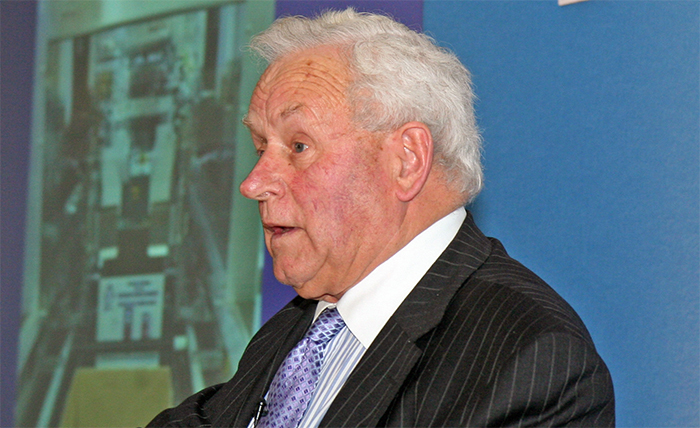
The German discount supermarket Aldi has responded to the launch of Asda’s New Year price war by cutting its own egg prices still further.
As we reported in last month, Asda has slashed the price of its free range eggs as the big four British supermarkets attempt to stop consumers deserting them for Aldi and Lidl. Asda is offering six mixed weight free range eggs for 79 pence – with the price of six medium free range eggs cut from £1.25 to 89 pence and six large from £1.65 to 99 pence. Although at the time of writing the other UK majors had not followed Asda’s lead, Aldi has hit back with further price cuts.
The German chain has cut another 10 pence off both medium and large free range. Medium free range are now 79 pence for six, with large free range 89 pence for six. In comparison, six medium free range eggs at the country’s biggest supermarket - Tesco – are selling for £1.00, with large free range priced at £1.30. The comparable prices for Sainsbury’s Woodland are £1.25 and £1.65 and at Morrisons £1.39 and £1.69.
With the possibility that the other supermarkets may eventually be drawn into the price war, farmers may be forgiven for thinking that the competition may put pressure on producer prices, although our understanding is that there has been no move so far by Asda to secure a reduction from suppliers. Indeed, discounting may well increase demand for free range eggs, putting further pressure on an already tight market. A shortage of supply would normally push producer prices up.

The free range egg market was unexpectedly tight all the way to the end of 2014 and we understand that latest figures indicate that demand for free range shell eggs is increasing at between three and five per cent. Barry Jackson of Egg UK says he still sees very strong demand for free range and John Campbell, the chairman of Glenrath Farms, says that the trend from cage to free range is increasing.
“I am amazed how the industry has managed to keep up with the demand,” said John, who said he believed that the split in the shell egg market was now something like 60:40 in favour of free range. “It’s moving very quickly.” Asked what he thought the implications were for producer prices, he said the industry would have to wait and see what the discounters did in the weeks and months ahead.
However, Sarah-Louise Fairburn of the Lincolnshire based producer and packer L J Fairburn said she was still confident that producers would have a good year despite the emerging price war. “I still think there will be good times. I think it will be fine as long as producers are able to maintain the same margin. I think free range will be flying off the shelves and, even if retailers do cut our prices, if we are able to maintain margins because of reduced costs we should be fine.”
She said that if demand was going to be growing retailers must know that producers needed the confidence to invest in increased production. They needed to know they were going to be able to make a living. “If free range eggs are priced at a level that means consumers buy two packs instead of one then that is good for the industry, but the price needs to be a sustainable one rather than a silly one,” she said.
Anecdotal evidence suggests that free range producers have been increasing production and more will do so in the year ahead. The trend, which was identified in member surveys carried out by the British Free Range Egg Producers’ Association (BFREPA), seems to be borne out in the latest figures released by the Department for Environment, Food and Rural Affairs (DEFRA). These figures show that layer chick placings were up by 24 per cent in December when compared with the same month last year. A total of 2.9 million chicks were placed in UK hatcheries in December 2014 compared with 2.3 million in December 2013.
Traders, analysts and egg industry leaders have found it difficult to understand what has been happening in the egg market. Expectations of oversupply failed to materialize in 2014. At times traders had difficulty obtaining the free range eggs their customers were demanding. The figures for eggs set in the latest Defra statistics may cause more confusion. Whilst chick placings for December were up sharply, the number of eggs set in December was down nearly 10 per cent.
Robert Gooch, director of policy with BFREPA, said that free range production had been increasing consistently since the final quarter of 2013, although the increase had not been by as much as predicted by the association’s modelling. He said it was very difficult to forecast what might happen. If discounting continued to increase demand for free range eggs it was difficult to see how producer prices could be cut. He said that packers had already been saying that they had been “taking the hit” on supermarket discounting rather than passing price cuts onto producers.
Barry Jackson said one thing that had made it more difficult to predict the market was that, whereas in recent years the industry had mostly needed to consider just the supply side, the demand side was now having a bigger impact on what was happening. There was more demand for free range eggs, more demand for free range eggs in processing and more demand for home produced eggs, he said. It meant there were now more options for free range egg producers, said Barry.
There was some indication of a positive mood amongst egg producers in the results of a recent survey conducted by the National Farmers Union (NFU). Some 86 per cent of respondents in both the egg and poultry meat sectors reported that profits were either increasing or being maintained. The poultry sector overall had the highest short term confidence of all the farming sectors surveyed by the NFU.
NFU Economist Anand Dossa said, “It is good to see that there is such confidence in the poultry industry, which is equal across both the meat and egg sectors. The short term confidence is certainly being helped by the lower feed and fuel prices being experienced in the second half of this year.”
The NFU survey found that egg producers would be increasing investment over the next three years - mainly in bird numbers and energy efficiency but also in machinery. Investments in diversification and buildings would be lower over the next three years compared with the last three. The level of investment in skills and training would be equivalent to that of the previous three years.
